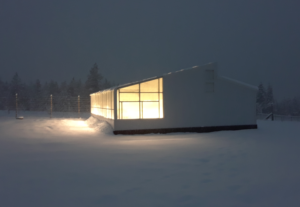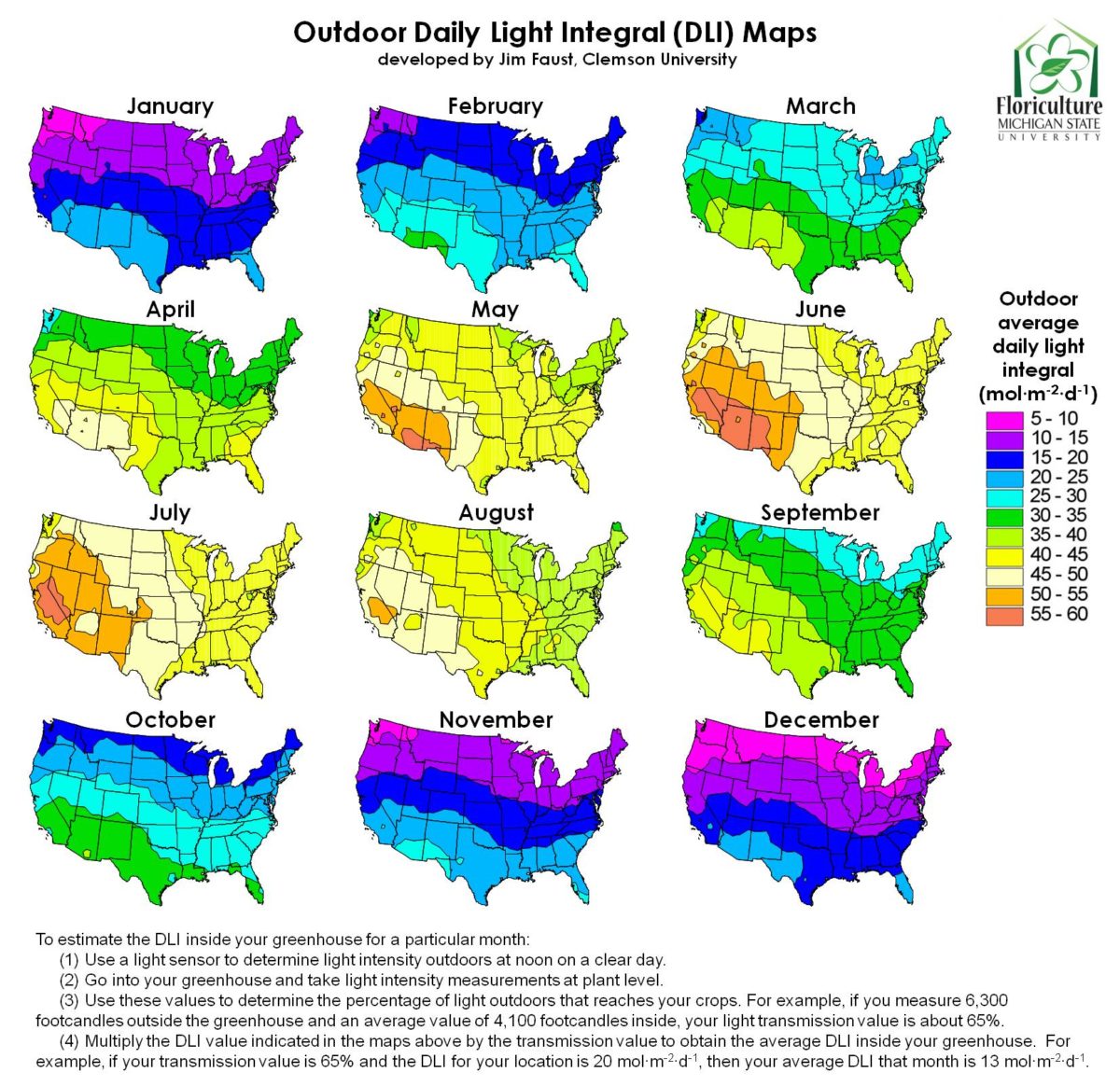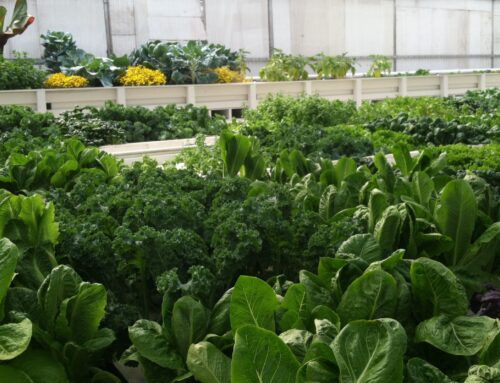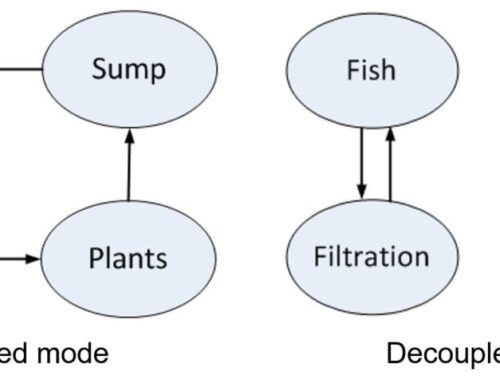Do I Need Artificial Grow Lighting in my Farm?

Ceres 23 x 40 Passive Solar Aquaponic Greenhouse in Idaho
One of the greatest benefits of aquaponic farming is the ability to grow fresh produce year-round, even when other growers in your area are shut down for the winter. This puts the aquaponic farmer in a unique position to be the only local supplier in a market with high demand, which increases revenue for the farm. Assuming you are in a climate-controlled greenhouse, the only factor preventing efficient production in the dead of winter is available light for your plants.
One way that we measure the amount of light available to plants throughout the year is by calculating the Daily Light Integral (DLI). DLI is a measure of the amount of photosynthetically active photons (individual particles of light in the 400-700 nm range) from the sun over a 24-hour period. This value is expressed using the unit mol/m2/D (moles of light per square meter, per day) Each crop has its own DLI level that allows for optimal production for that species. For example, lettuce and most leafy greens require a DLI of 17 mol/m2/D for ideal production. At a DLI of 17, lettuce only requires 4 weeks of grow-out time. At any level less than that, production time is slowed to 6-8 weeks. Comparatively, tomatoes need a DLI of 22.
Throughout the year, the amount of light that we naturally receive from the sun fluctuates with the seasons. Between the summer solstice (longest day of the year) and the winter solstice (shortest day of the year), DLI gradually decreases until the winter solstice (December 21), and then starts to increase again until the summer solstice (June 21). DLI levels during the year throughout the continental US vary depending on the latitude where your farm is located. A farm in southern Colorado can maintain a DLI of at least 17 in December, while a farm next door in Wyoming would dip below a DLI of 15 at the same time (See DLI map of the US below). In a commercial farm, this can be the difference between success and failure . Other factors that can decrease your DLI include the type of glazing on your greenhouse, weather, or shading.
If year-round production is desired, we can use artificial grow lighting to supplement the DLI provided by the sun to optimal levels for plant production (This is usually a DLI of 17-20 for leafy greens). We calculate the amount of light lacking from your greenhouse, and specify lighting systems to bump it up to the right level for the plants. We have tested the light output of each fixture, and know the moles of light they can provide to an area.
Additionally, the height that the light is hung over the plants plays a big role in DLI. For example, a fixture 2 feet above the plants may provide 100% of the light required for growth, and would cover a 16 ft2 area. The same fixture hung at 3 feet above the plants could provide 60% of the light required, but would cover a 36 ft2 footprint. The latter is an example of a supplemental lighting system where the sun would be providing the rest of the necessary light.
Supplemental lighting systems vary in light output, cost, and power consumption depending on the amount of light needed to make up for the suns shortcomings in the winter months. Northern farms will need more light fixtures, closer to the plants, with narrower lighting footprints than farms to the south. Lighting systems for northern farms will cost more, and require more electricity to operate. Often times however, the revenue that a farmer can generate in the winter outweighs the expense of using artificial lighting.
One way that we can reduce the cost of a lighting system while maximizing the area covered by lights is through the use of light mover systems. A light mover is a robotic track system where the light is mounted to a motor that carries it several feet across a track. The light moves down to the end of the track where it reverses to the other end, and the process repeats. These motors use very little electricity, and cut down on the number of light fixtures required to cover a farm. By adjusting the length of the track, height of the light over the plants, and hours the light operates per day, we can very accurately target DLI at level where the plants are happy, and we aren’t wasting electricity by producing too much light.
In greenhouses that use supplemental lighting, most farmers turn their lights on early in the morning until the sun is up, and then shut them off until the sun goes down, when they are turned on again. Depending on the amount of light your greenhouse needs, this may be between 4-8 hours (or more) of operating time per day in the winter. Whether your farm needs no lights, supplemental lighting, or complete coverage, just remember that your plants require a set amount of light to grow properly, and you aren’t constrained to the sun to be productive year-round!

DLI map of the continental United States (Source: Michigan State University)


